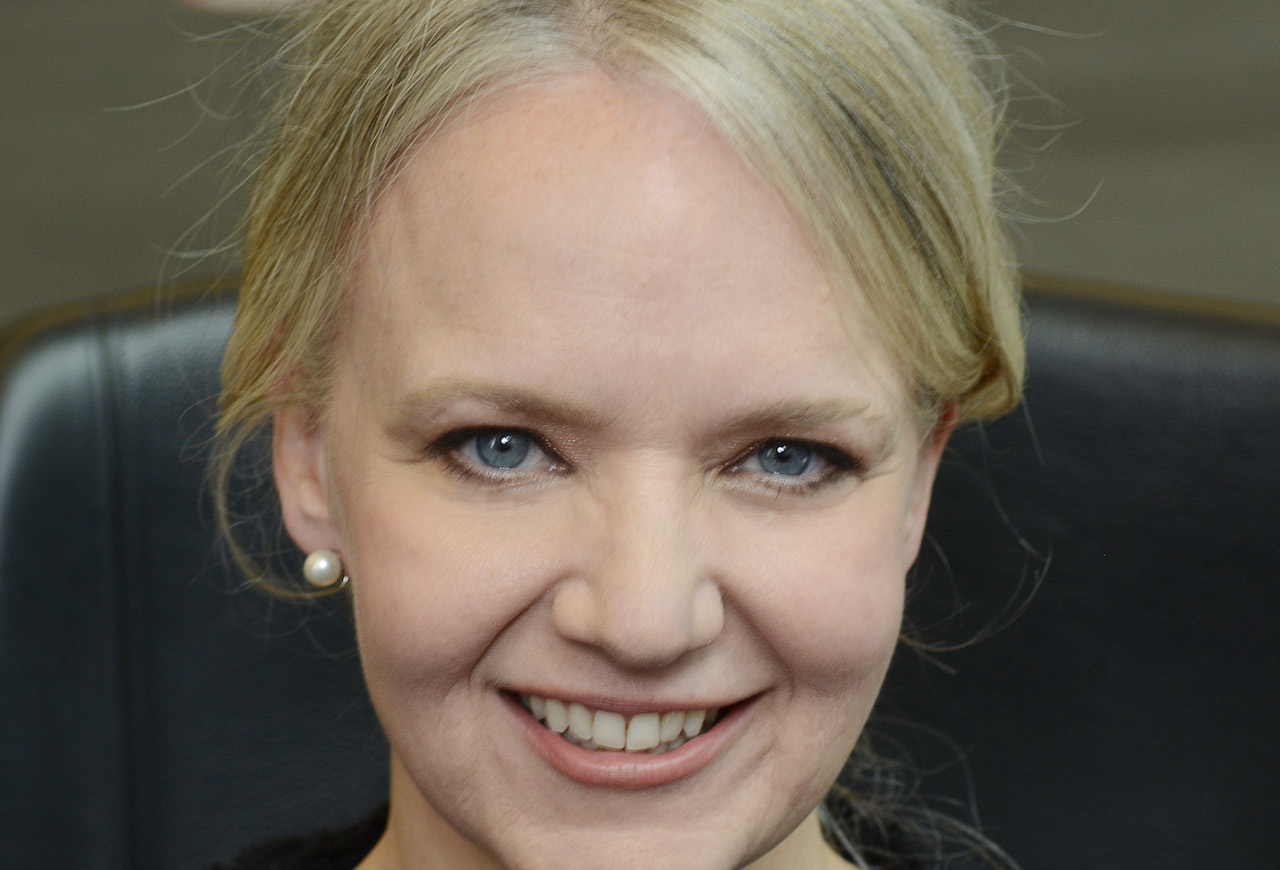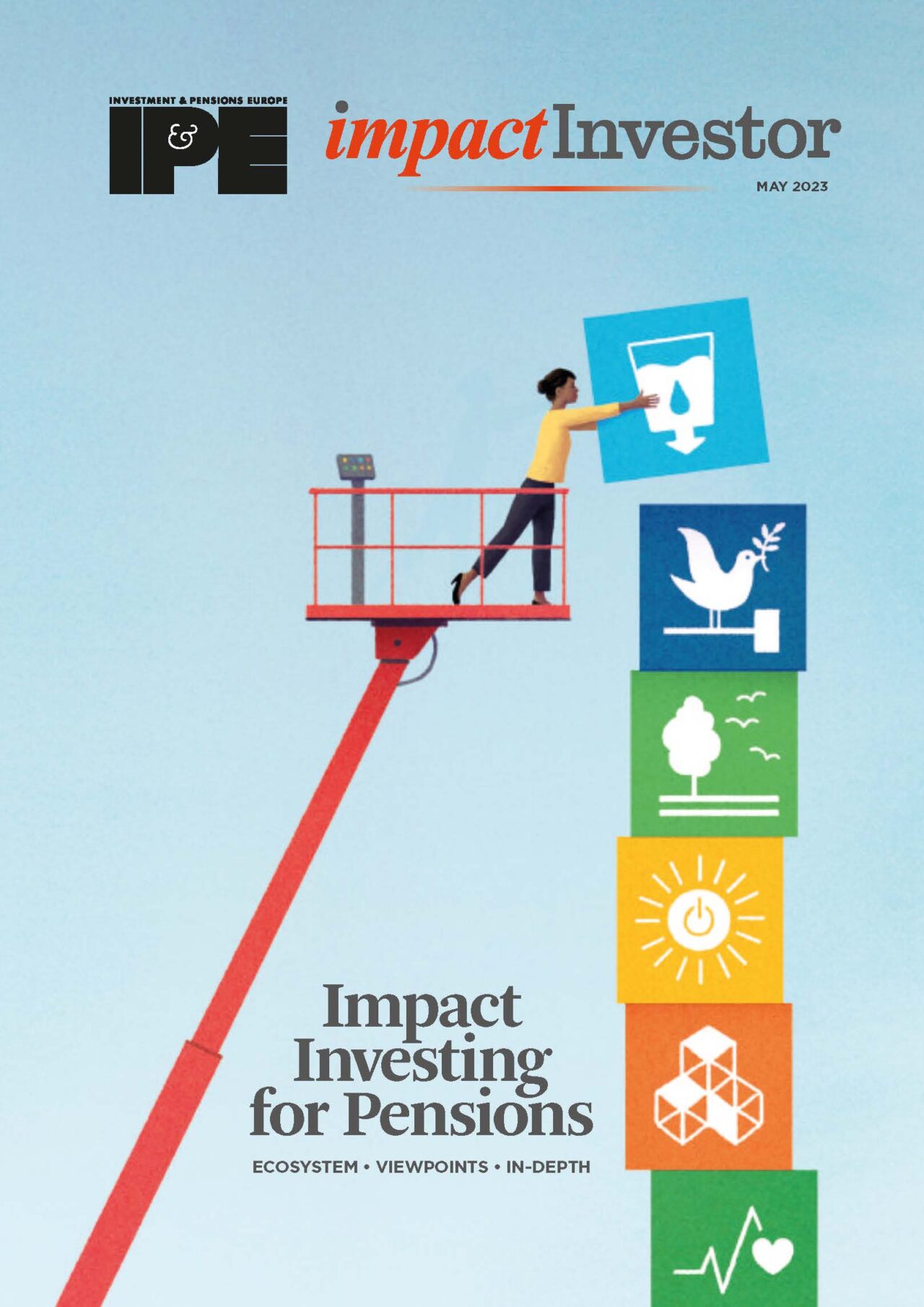Appetite for impact investments among Europe’s pension funds is on the up but still only represents a very small part of their portfolios. Investment managers are responding by developing new impact-driven strategies across asset classes.

A recent study by the Venture Philanthropy Association (EVPA) and the Global Steering Group for Impact Investment (GSG) estimated that the European direct impact investment market – investments directly going into enterprises addressing social and environmental challenges – at €80bn. The same report showed impact investment assets under management grew by 26% from 2020 to 2021, but still represent just 0.5% of the Europe’s mainstream investment management industry.
The latest Global Impact Investment Network (GIIN) market sizing report estimates the total size of the impact investing market globally, covering both direct and indirect investments, to be over $1.1trn, with around half of that coming from Europe.
Independently of the figures we look at, what is clear is that impact investing still represents a tiny fraction of the investment management industry as a whole, and it is not growing fast enough to deliver on the UN Sustainable Development Goals (SDGs) by 2030. The further mobilisation of institutional capital, and in particular pension assets, into impact investment strategies is crucial for the sector to grow at scale.
Fiduciary duty and IMM
According to the EVPA/GSG report, the biggest source of funding for the European direct impact investing market are financial institutions (28%), followed by individual investors (26%) and institutional investors (23%). Pension funds only represent 5% of total direct impact investments in Europe. The GIIN’s data shows that only 2% of total impact investments made globally are coming from pension funds.
The reasons for the low exposure to impact investments among pension funds varies, ranging from limited knowledge about the sector, to lack of standardisation when it comes to impact measurement and management, fiduciary duty and risk management concerns, and regulatory restrictions regarding exposure to certain asset classes and geographies, among others.
The issue of fiduciary duty is raised by many as an entry barrier. “As long as you can prove you can make risk-adjusted, market-rate returns, impact investments should be very attractive for pension schemes,” says Jonathan Dean, head of fund management for the impact private equity platform at AXA IM Alts. “It’s really important that impact is not labelled as a concessionary activity because it’s not. There are elements further down the spectrum [of capital] where there may be impact-first social investments, or there may be charitable or philanthropic activities but those occupy a different place in the spectrum.”
Also, standardisation of impact measurement and management (IMM) frameworks is a key area for pension funds and investment managers. “Impact measurement and management is extremely critical because it articulates everything we do, from selection to ESG integration, to setting targets,” says Rekha Unnithan, global head of impact private equity at Nuveen. “For as long as we have been doing this, we have been leading the way and trying to shape the industry around what IMM best practices are.”

Unitthan stresses the importance of the selection aspect, noting that more pension funds are hiring individuals with ESG and impact expertise to do manager selection and that they “are very happy to engage with those individuals because they understand best practices and evaluate managers based on that”.
She adds: “Depending on where the pension fund is, and what environment they’re operating within, there’s different focus on different standards. Obviously in the European Union, there is a lot of focus on SFDR. But broadly speaking, [investors] want to ensure that their dollars are flowing into funds that are focused on impact, and that actually there’s an intention to create business models that results in positive impact. So, essentially, they want to avert greenwashing or impact-washing.”
Problem-solving
AXA IM Alts’s Dean explains he has spent over a decade building the firm’s impact investing platform, focused on private markets. “Historically we’d been very focused on ESG as an asset manager but in our mind ESG is a risk management tool.” He adds: “When we are talking about impact investing, we are going a step further. It is about problem solving – we’re identifying large problems with society or the environment, quantifying them and then we’re investing in solutions to try and address those problems. And the success is measured on how good the solution is. Is it solving the problem? That’s what an impact investment is. And we do all of that whilst delivering a market rate return.”

Dean believes that being owned by an insurance company, AXA Group, is relevant to their approach to impact investing. “If you are an insurance company, you have risk associated with climate change, and perhaps also risk associated with healthcare and financial inclusion. So, it makes sense the company is very active in supporting the mitigation of those risks using their balance sheet – it is also linked to corporate responsibility topics, and impact investing is a very good supporter of this.”
He draws parallels with the pension fund sector where motivations should be similar. “As a pension fund you should have a view about what your members are going to be motivated by supporting and that trend towards sustainability and societal issues has increased dramatically over the past decade.”
Impact across asset classes
Currently the bulk of assets in impact strategies is invested in private markets, in particular in private equity. According to recent data from impact consultancy firm Phenix Capital, private equity remains the biggest contributor to impact capital, with over half of the 2,200 funds included in their database investing in the asset class.
The decision for investors is whether to choose a first- or second-time impact fund manager who might have a strong impact track record but not the financial track record or go for a large investment manager with very strong financial credentials but who hasn’t yet built a track record in impact.
“The truth is that most pension funds and institutional investors have always been comforted by the financial track record and taken more risk on the impact side, although we are seeing increasing accountability here with the introduction of sustainability-related regulation,” says Dean.
Real assets, including real estate and infrastructure, is another asset class where pension funds seeking to invest for impact are looking at, in particular in areas such as affordable housing, sustainable real estate developments and infrastructure projects supporting the energy transition.

John Levy, director of impact for Franklin Real Asset Advisors, says: “The core of what we do, and what we need to demonstrate to asset owners including pension funds, is that we can provide very attractive return characteristics for them, that are in line with market expectations and simultaneously create measurable impact. The concept is not new but every year that goes by we see more pension funds and institutional investors getting comfortable that it is in fact possible.”
Levy talks about having a “dual return” mandate where the responsibility of both delivering risk-adjusted returns and creating positive social and environmental impact, are taken equally seriously. In their case, this is done by investing in social infrastructure assets which “by their very nature are in high demand and are often undersupplied to local communities”.
Public markets
Away from private markets, the question of whether impact investing can be done effectively by investing in public markets is still up for debate. In fixed income, green bonds and other types of sustainable bonds are attracting increased attention from institutional investors.
On the equity side, although some would argue that ‘pure’ impact investing does not belong in listed markets, a growing number of asset managers and asset owners disagree. The GIIN has recently published guidance for those pursuing impact in listed equities, covering aspects such as setting a fund or portfolio strategy, engagement and the use of performance data.

Erin Leonard, head of sustainability at HSBC Asset Management, says: “As an asset manager we feel very strongly that we’ve got a purposeful role to play in the transition to a new economy and we work with our clients to facilitate investments into the projects and businesses around the world that are driving this transition. We’re very intentionally creating investment standards and also new capabilities to provide access to impactful investments to pension funds around the world.”
In the case of HSBC Asset Management, the attention is very much focused on the real assets space, from renewable energy to natural capital and sustainable infrastructure. “But also in the listed asset space because there are existing companies that are leading change there too. We have been developing new funds and strategies that are prioritising investment in existing companies that have the strongest transition plans and are at the forefront of developing new technologies.”
Here she highlights the importance of being very active on the engagement side “talking to the broad set of companies that we hold and helping them to understand what good transition practice looks like”.
Doug Anderson, head of consultant relations at Federated Hermes, agrees: “The one thing that is key in terms of impact investing within the public market strategy structure, whether that’s equities or fixed income, is the engagement element. Companies can learn from us and we can affect positive change within their own businesses to make them a more sustainable long-term proposition. Engagement is a very big piece in our approach to impact investing.”
Whether it is in private or public markets, pension funds’ exposure to impact investing is set to grow, but perhaps not fast enough. More innovative approaches such as outcomes-based contracts or place-based investing, also covered in this report, are likely to attract more interest and drive the further mobilisation of capital into strategies that can deliver real world impact.
This article is part of the editorial content of the Impact Investing for Pensions report. You can download a digital copy of the report here.






